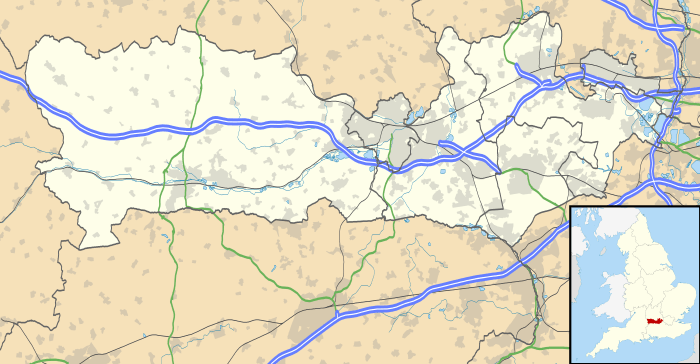Cock Marsh

Cock Marsh is an area of flat water meadows and steep chalk hillsides near Cookham village and civil parish in the north-eastern corner of Berkshire in England, on the River Thames. It covers 46 acres (19 ha)[1] and has been common land used for grazing since 1272. It was bought by local villagers and given to the National Trust in 1934.[2]
It has four burial mounds that are scheduled monuments.[3] One has a height of 2m, three others around 0.2-0.8m. When they were excavated between 1847 and 1877 by two local men, Cocks and Napier, several cremated bodies were found, together with parts of a shield and a possible Saxon age knife. It is thought likely that the barrows were constructed in the early Bronze Age with secondary Anglo-Saxon use. In 2007, a resistivity survey was carried out by Chiltern Archeology [4] which confirmed the existence of four barrows and one other feature.
Cock Marsh is now a designated a Site of Special Scientific Interest.[1] It is home to many rare plants, notably Cyperus fuscus (Brown Galingale), which is found in only a handful of sites in Great Britain.
The railway line to Marlow and the Thames Path run through Cock Marsh and a footbridge cantilevered from Bourne End Railway Bridge over the river links it with Bourne End in Buckinghamshire where the path continues towards Marlow.
Some sources suggested there was an airfield here back in the 1920s used by German and French pilots who were spending their time on the River Thames.
References
- ↑ 1.0 1.1 "SSSI Citation for Cock Marsh". English Nature. Retrieved 2009-04-08.
- ↑ "Thames and Solent Countryside". National Trust.
- ↑ "List of Scheduled monuments for Berkshire corrected to 1952". Retrieved 10 Jun 2010.
- ↑ "Project Report No 15". 2007. Retrieved 10 Jun 2010.
| Wikimedia Commons has media related to Cock Marsh. |